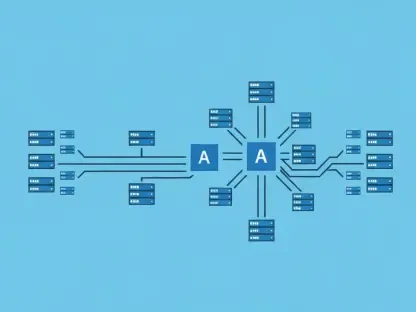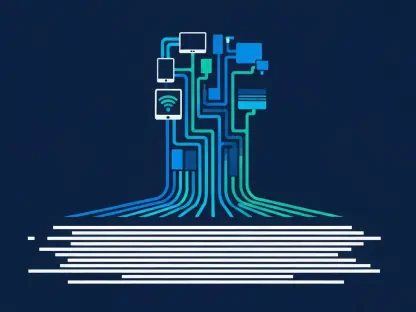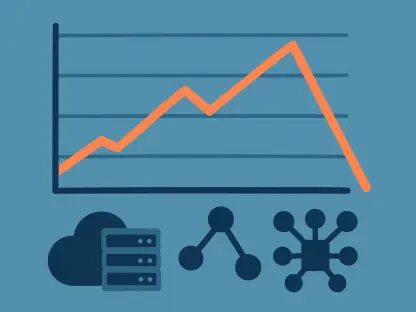Launching a successful software project in 2025 demands strategic planning, cutting-edge technology adoption, and continuous adaptation to trends. With the tech landscape evolving rapidly, it’s crucial to have a well-structured approach that anticipates market demands and leverages the latest technological advancements. Here’s a detailed guide on how your software project can thrive in the competitive market of 2025.
Strategic Planning and Vision
Strategic planning forms the backbone of any successful software project. In 2025, the rapidly evolving tech landscape requires a visionary approach. Start by clearly defining the problem your software aims to solve. An in-depth market analysis to identify gaps and opportunities is essential. This upfront groundwork aids in refining your product’s features and functionalities to meet market demand.
Creating a comprehensive project plan, which includes timelines, resource allocation, and budget estimations, is crucial. Adopt agile methodologies to ensure your project remains adaptable to changes. Finally, setting measurable milestones and key performance indicators enables you to track progress and make necessary adjustments swiftly. The planning phase not only helps to pinpoint the most pressing issues but also streamlines the process, making it easier to manage and implement changes dynamically as the project progresses.
The significance of the initial strategic phase cannot be overstated. By investing time and resources in this critical foundation, you can anticipate potential roadblocks and prepare contingencies in advance. Regularly revisiting and revising the strategic plan ensures that your project remains aligned with market needs and technological advancements. This proactive approach will help to mitigate risks, streamline processes, and maximize the likelihood of a successful launch.
Leveraging Cutting-Edge Technologies
Embracing the latest technological advancements is imperative. No-code and low-code platforms are expected to revolutionize the development process by 2025. These platforms allow rapid application development with minimal traditional coding, thereby speeding up time-to-market and reducing costs. With an estimated 75% adoption rate, staying ahead in utilizing these tools can provide a competitive edge.
Artificial Intelligence (AI) and Machine Learning (ML) play a pivotal role in optimizing various aspects of software development, from automated code generation to predictive analytics. Incorporating AI-driven tools can enhance overall efficiency, enabling developers to focus on more complex, value-adding tasks. By leveraging these intelligent systems, development teams can accelerate their workflows and make data-driven decisions that enhance the project’s effectiveness.
Moreover, integrating AI and ML into the development lifecycle facilitates predictive maintenance and real-time analytics, providing insights that were previously unattainable. These technologies can identify patterns, predict issues before they occur, and automate routine tasks, freeing up human resources for more strategic activities. As the landscape of technology becomes increasingly complex, the ability to harness these advanced tools will be a decisive factor in outpacing competitors and delivering superior software solutions.
The Role of Automation
Automation is key to streamlining software development workflows. By 2025, automation tools will be indispensable for managing repetitive tasks, code deployment, and continuous integration and delivery (CI/CD). Implementing CI/CD pipelines ensures that new code is seamlessly integrated into existing systems, reducing the risk of errors and speeding up the development lifecycle.
Automated testing is another critical component. Leveraging automated testing solutions can greatly enhance quality assurance processes, ensuring that your software is robust, reliable, and ready for market. By expediting bug detection and resolution, automation helps maintain high software standards, crucial for user satisfaction. This increased reliability and efficiency in testing phases shorten the time to market and boost the overall quality of the final product.
Furthermore, automation extends beyond just CI/CD and testing. It encompasses various other processes like monitoring, alerting, and even customer support. By automating these peripheral yet essential functions, you allow your team to concentrate on core development tasks, thereby increasing productivity. In a competitive market, the ability to deploy swiftly, reliably, and frequently will distinguish leading software projects from the rest.
Advanced Security Measures
With the rise of cyber threats, robust security protocols have become non-negotiable. Your 2025 software project must prioritize security from the get-go. Implement advanced security frameworks that can protect against data breaches and unauthorized access. Techniques like data encryption, secure coding practices, and multi-factor authentication are vital.
Regularly updating to the latest security patches and conducting thorough security audits helps in identifying vulnerabilities early. Training your development team on the latest cybersecurity trends and practices ensures that they are well-equipped to handle security challenges proactively. This ongoing vigilance not only protects your software but also instills confidence in your users and stakeholders, which is invaluable in a competitive market.
The importance of adopting a proactive security stance cannot be overstated. Cyber threats are constantly evolving, and what is secure today may not be secure tomorrow. By fostering a culture of security mindfulness, you can mitigate risks before they become systemic issues. This comprehensive approach to security—from planning through post-launch—provides a robust defense that safeguards your software and enhances its longevity and reliability.
Enhancing Collaboration and Communication
Efficient collaboration and transparent communication are fundamental for any successful software project. Remote work has become a norm, and leveraging collaboration tools is more important than ever. Platforms like Slack, Microsoft Teams, and Zoom facilitate seamless communication, ensuring team members stay connected regardless of geographical locations. These tools offer an array of functionalities, such as file sharing, video conferencing, and real-time messaging, that make teamwork more efficient and cohesive.
Developing a culture of transparency and openness fosters trust and encourages innovation. Regular stand-up meetings, progress reviews, and feedback sessions keep everyone aligned and accountable. Using project management tools like Jira or Trello can aid in tracking tasks and ensuring timely delivery of project milestones. This structured approach to team collaboration minimizes misunderstandings and enhances productivity, leading to a more streamlined and effective development process.
Moreover, fostering a collaborative environment extends beyond just using the right tools; it’s about building a team culture where every member feels valued and heard. Encouraging open communication and active participation ensures that diverse perspectives are considered, leading to richer, more innovative solutions. In an increasingly globalized and remote working world, mastering the art of effective collaboration will give your project a significant competitive advantage.
Embracing Continuous Learning and Skill Development
To launch a successful software project in 2025, you need strategic planning, adoption of the latest technology, and a readiness to adapt to shifting trends. The rapid evolution of the tech landscape makes it essential to have a well-thought-out approach that both anticipates market needs and harnesses new technological advancements. Here’s a comprehensive guide to help your software project stand out and succeed in the fiercely competitive market of 2025.
First, start with clear planning. Define your goals, target audience, and strategies to achieve your objectives. The better your initial plan, the smoother the execution will be. Next, stay informed about cutting-edge technologies such as artificial intelligence, machine learning, and blockchain. Integrating these into your project can provide a significant advantage.
Additionally, adaptability is key. As trends shift, your project should be flexible enough to integrate new features or pivot direction as needed. Experimenting with new ideas and updating your project accordingly can keep it relevant and innovative.
Lastly, ensure you have a skilled and diverse team. With a range of expertise, your team can better handle unforeseen challenges and innovate effectively. These elements combined will give your software project the best chance to thrive in 2025.









